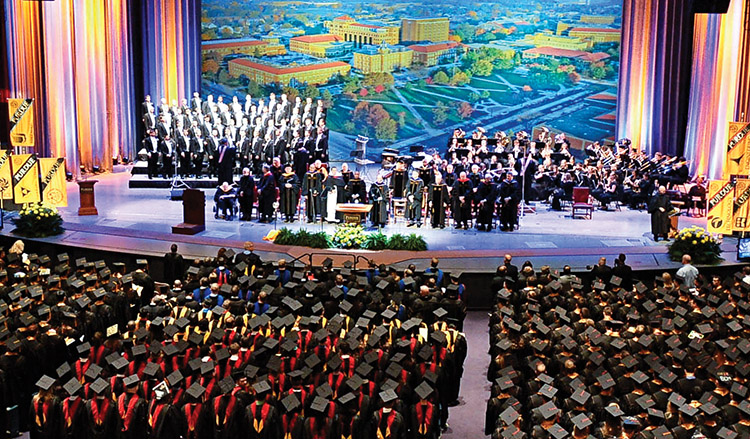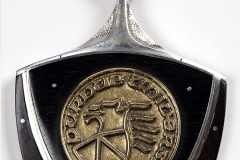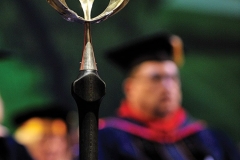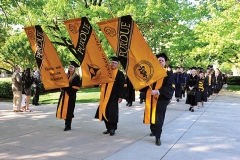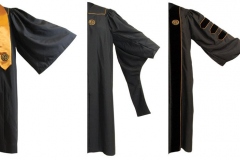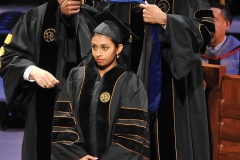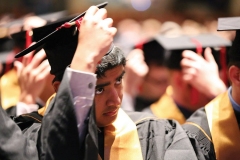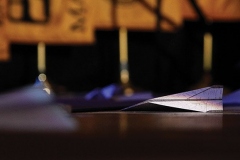The objects, customs, and traditions that make Purdue’s commencement ceremony special for its graduates
The university’s first commencement was held in May 1875 to honor a class of one.
John Harper, a transfer student from Northwestern Christian University, now Butler University, received a bachelor’s of science in chemistry. Early ceremonies were held in Military Hall or outdoors on the Oval under a circus tent. The image above depicts the graduate procession of 1903, the year the ceremony was moved to the newly completed Eliza Fowler Hall. Participants wore regular dress clothes because the use of caps and gowns for graduation was not adopted by the senior class until 1922.
In the early 1930s, commencement exercises were relocated to the Memorial Gymnasium, now known as Haas Hall, to accommodate growing class sizes. Limited space for guest seating soon necessitated another move to the Armory until Elliott Hall of Music was dedicated in 1940. It has housed commencement ever since.
Alternate locations such as Ross-Ade Stadium or Mackey Arena have been considered over the years, says Christine DeHahn Pass, senior assistant registrar and vice chair of the committee that governs commencement policies and procedures. “Moving to another venue could change our ceremony drastically,” says Pass. Students would no longer cross the stage, hear their names read aloud, and receive their actual diploma, but rather stand up to be recognized as a class and then sit back down.
“We are one of the few large institutions that release diplomas on stage,” says Pass. “That is rare for a school of our size, but it’s a long-standing tradition, and I don’t see it changing in the future despite increases in enrollment.”
Many aspects of the commencement ceremony stem from tradition. Academic costumes are rooted in medieval attire worn by clerics and scholars who adopted gown styles similar to those of their monastic order. Not until universities gradually began to pass from control of the church did these early drab costumes begin to take on brighter hues.
Though honoring tradition is central to creating a prestigious, memorable ceremony, Pass and the commencement committee are continuously evaluating the event and seeking new ways to enhance the services and respond to requests. In 2013, Purdue was the first university in the nation to start using gowns made from 100% recyclable materials. This spring, the university is introducing a division specifically for the Graduate School in order to provide enough guest tickets for each graduate across the divisions.
Just as they did more than 100 years ago, candidates still form a procession across campus. Today’s graduates march up the steps of Hovde Hall while the Bell Tower carillon plays music associated with the university and the state of Indiana. They are then joined by the members of the platform party and the faculty, and the combined procession enters Elliott Hall announced by a fanfare.
Months in the planning, pulling off the well-orchestrated event for nine divisions each year takes a staff of 25 from the registrar’s office working behind-the-scenes. “We also rely a lot on Hall of Music Productions, Purdue Police, and Facilities,” says Pass. “It takes a village. I couldn’t do it without all of them.”
It’s a passion for honoring student achievement that‘s driven her involvement in the ceremony over the past 20 years, Pass says. “Commencement weekend is a memory that those students and their families will cherish forever.”

